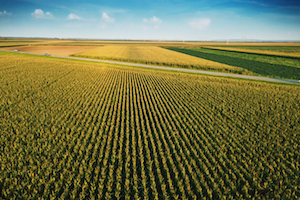Bill Wiebold, MU Extension agronomist, recently shared his advice for maximizing corn yields this season. He notes that the cold, wet start to this year’s planting season has boded poorly for yields. However, there is still time to get corn in the ground to yield favorable conditions.
For starters, Wiebold says that producers should not switch from corn to other crops or early maturing corn varieties – this season’s conditions are bound to improve. Switching to an early maturing corn variety almost assures yield loss.
“Those early varieties are shorter and have less yield potential. An early variety might offer some advantage in reduced drying time at harvest, but that depends on the fall season,” Wiebold says. “We found that corn hybrids with CRM (comparative relative maturity) of 110 out-yielded corn hybrids with CRM of 100 until the first week of June.”
Instead, Wiebold encourages producers to work with corn based on the unique conditions of their fields. Soil conditions should always dictate when to plant.
“Our data provide some optimism that reasonably high yield can be obtained when corn is planted in mid-to-late May,” Wiebold says. “However, yield potential is very strongly dependent on weather conditions in summer. For this reason, it is difficult to predict in any specific year what will happen to corn yield if planting is delayed.”
The crop progress report from the USDA (April 29) stated that 45 percent of Missouri corn is in the ground, with 7 percent emergence. Only 2 percent of soybean was in the ground.
For more information on maximizing corn yields, visit the MU Extension website at www.extension2.missouri.edu.
